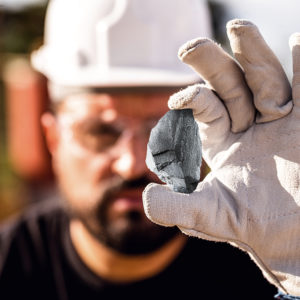For an alternate viewpoint, see “Counterpoint: Oversight and Innovation Are Critical, Not Stock Ownership.”
Five decades after the creation of the Strategic Petroleum Reserve in the wake of the Arab oil embargo, the United States is facing a new threat to its economic, energy and national security that calls for similarly decisive action: the weaponization of mineral supply chains by China. The time has come to create a Strategic Minerals Reserve.
Beijing’s control of the minerals that are the essential inputs to every device, technology and weapons system our economy and military rely on far exceeds the high-water mark of OPEC’s control of global oil supplies.
Under the Biden and Trump administrations, Beijing has deployed its minerals weapon, slashing or altogether cutting off the supply of minerals essential to the production of everything from semiconductors and cars to munitions and fighter jets.
This isn’t about leverage in trade negotiations. It is an unmistakable warning that if President Xi Jinping chooses, he can bring the gears of American industry and military industrial base to a screeching halt.
The Trump administration is urgently working to address the minerals crisis, looking to ramp up domestic mineral production and to create new global mineral supply chains outside of Beijing’s control. China’s dominance has been decades in the making, and Xi is not going to let it go without a fight.
Again and again, when Western mineral producers have worked to develop alternative sources of supply, China has responded by flooding the market and driving prices down. The result is that free and transparent markets for far too many essential minerals don’t exist.
Secretary of the Treasury Scott Bessent recently said, “When you are facing a nonmarket economy like China, then you have to exercise industrial policy.” Bessent added that the United States must set up a Strategic Minerals Reserve.
He’s absolutely right.
Defanging China’s minerals weapon is a national security imperative. A Strategic Minerals Reserve could serve as a critically important tool of deterrence against Chinese aggression, a shield for U.S. security, and, crucially, a catalyst for rebuilding domestic productive capacity.
There’s ample precedent for such an effort. The establishment of the Strategic Petroleum Reserve offers lessons, but so does the development of the vast minerals defense stockpile created during the Cold War.
While the United States maintains a minerals defense stockpile, it’s a fraction of what it once was. By the early 1960s, the stockpile was valued at more than $70 billion in today’s dollars. It was designed to support the U.S. military and the U.S. industrial base during an extended conflict with the Soviet Union.
That stockpile, developed from lessons learned and acute material shortages during World War II and the Korean War, initially drew from resources wherever possible, including from the Soviet Union. However, once baseline reserves were in place, it became a tool to support domestic production with remarkable results.
Through agreements, price floors and targeted tariffs, the United States could energize significant expansion of domestic mineral production of many metals, ranging from tungsten to cobalt and copper.
This minerals industrial strategy recognized the need for the materials that could sustain a war effort and an excellent industrial economy, and the know-how to build, produce and rapidly expand our materials industrial base when needed.
The minerals crisis we confront today demands precisely that type of commitment — the kind of patient, robust policy a strategic minerals reserve could underpin. China offers us just such a model.
China boasts a strategic minerals reserve that it uses to support critical manufacturing industries during national emergencies and to influence mineral prices to support domestic mineral producers and downstream consumers. The U.S. Strategic Petroleum Reserve is now employed similarly to backstop economic security during energy crises and to support domestic production when prices fall.
The era of half measures to address our alarming reliance on mineral imports and China’s weaponization of mineral supply chains must come to an end. With a suite of policy tools, anchored by a Strategic Minerals Reserve, we can decisively address our glaring minerals vulnerability and rebuild the domestic productive capacity so essential to a secure and dynamic industrial base.


